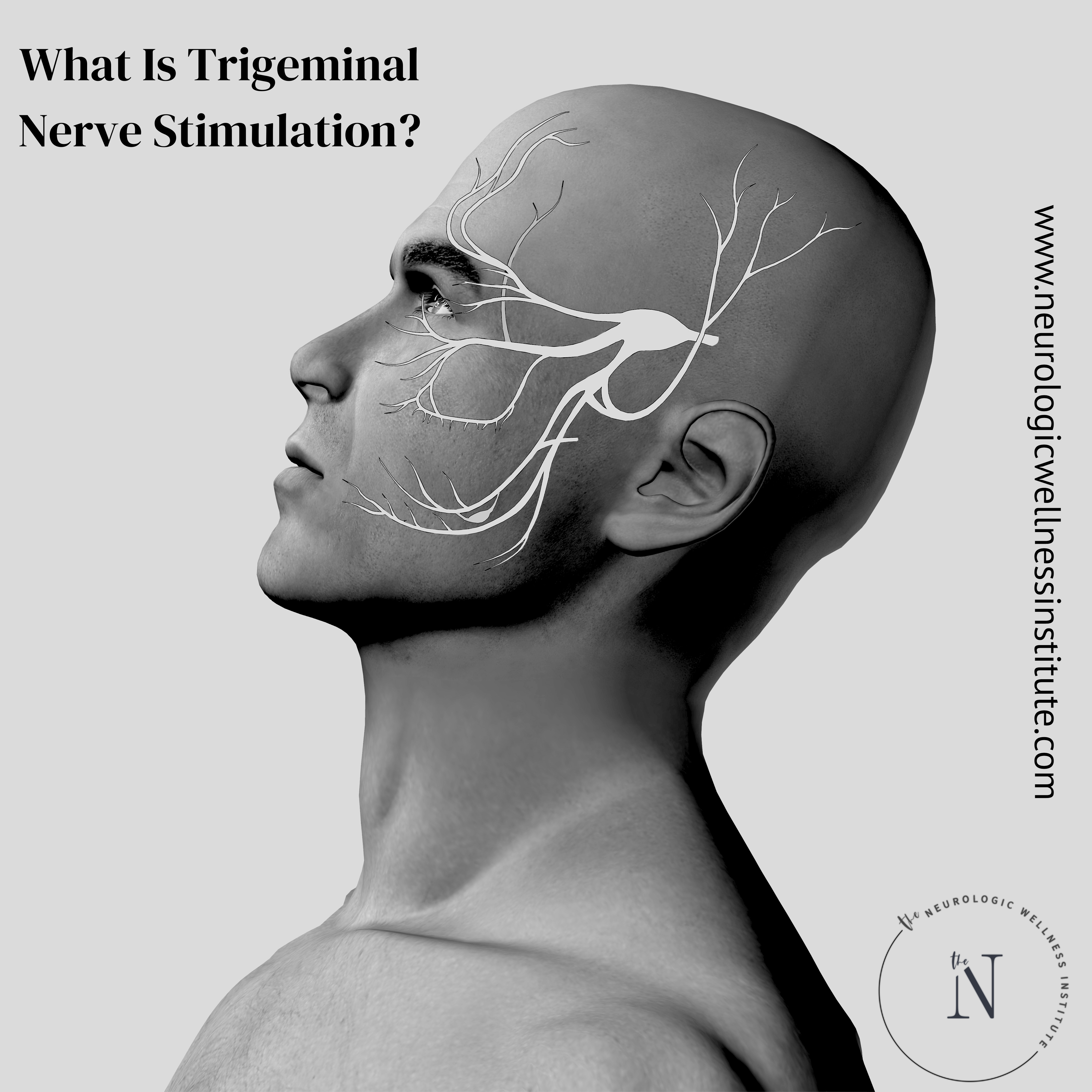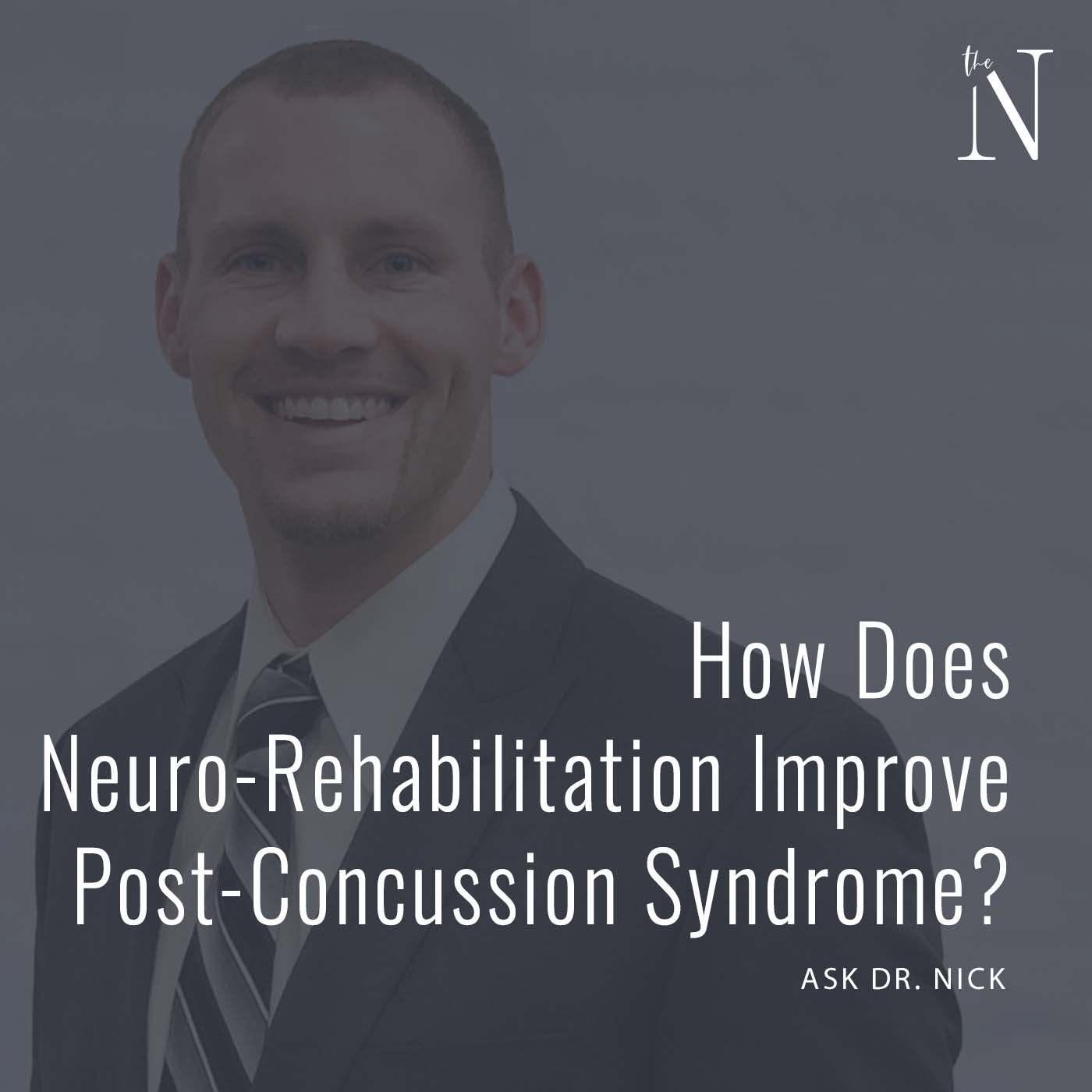
Trigeminal Nerve Stimulation
Before we begin our discussion on the benefits of trigeminal nerve stimulation, let’s first define the trigeminal nerve.
The Trigeminal Nerve
The trigeminal nerves are nerves in your head which allow you to feel the sensation of your face (such as touch, temperature, pain, etc.). The trigeminal nerves also allow you to move your jaw in order to do things such as biting and chewing. The trigeminal nerves are the biggest nerves in your head (also known as “cranial nerves”). Compared to the other 11 “cranial nerves” in your head, the trigeminal system has the largest area of the brain dedicated to its function and also has more communication with other regions of the brain. Information from the trigeminal nerves are transmitted through a high-speed freeway into both sides of the brain. Due to the size of the trigeminal system, the extensive communication of the trigeminal system, and the relative ease of stimulating the trigeminal system through the face and/or head, many researchers and doctors have been using Trigeminal Nerve Stimulation to help patients suffering from a variety of conditions.
What is Trigeminal Nerve Stimulation?
Classically, trigeminal nerve stimulation refers to very light electrical stimulation of different areas of the face (which are transmitted through the trigeminal nerves). Because areas of the scalp and ear also are transmitted to the trigeminal system in the brain, some people refer to any electric stimulation of the head as trigeminal nerve stimulation. The intensity of the electric stimulation is typically very light and should not cause any pain or discomfort. Because the trigeminal system interprets all sensation from your face and scalp, there are many ways to stimulate the trigeminal nerve. Our doctors at Neurologic Wellness Institute are well trained to use a variety of forms of Trigeminal Nerve Stimulation including, but not limited to, low-intensity electricity, light massage, or hot/cold packs.
How does Trigeminal Nerve Stimulation Help My Symptoms?
Trigeminal Nerve Stimulation has been proven to increase blood flow to your brain. Many conditions are associated with a decrease in blood flow in the brain. By improving the circulation of blood in the brain, many of our patients experience a reduction in their symptoms, improvement of quality of life, and an increase in healing/recovery. For example in a traumatic brain injury, research shows this increase of blood flow in the brain due to Trigeminal Nerve Stimulation is responsible for decreasing swelling in the brain, improving the blood-brain barrier, and reducing the size of the actual lesion.
Trigeminal Nerve Stimulation and Inflammation
Trigeminal Nerve Stimulation has been proven to reduce inflammation. Inflammatory markers such as TNF-α and IL-6 have been shown to be significantly reduced through Trigeminal Nerve Stimulation. Many illnesses are associated with elevated levels of inflammation. By reducing inflammation, the brain and body are able to function more efficiently.
Trigeminal Nerve Stimulation and the Effect on the Vagus Nerve
Trigeminal Nerve Stimulation has been shown to indirectly stimulate the vagus nerve. Trigeminal nerve stimulation communicates with areas of the brain which help control the amount of activation in the vagus nerve. The vagus nerve is associated with an increase in parasympathetic activity and has been associated with a myriad of health benefits.
That being said, Trigeminal Nerve Stimulation may be thought of as an alternative method to stimulate the vagus nerve.
How do I find out more information about whether Trigeminal Nerve Stimulation can help me or someone I know?
For more information on the type of conditions, our clinicians help with, schedule a consult with one of our patient care coordinators.
References
-Atalay et al. Transcorneal stimulation of trigeminal nerve afferents to increase cerebral blood flow in rats
with cerebral vasospasm: a noninvasive method to activate the trigeminovascular reflex. J Neurosurg.
2002:97(5);1179-1183.
-Chiluwal et al. Neuroprotective effects of trigeminal nerve stimulation in severe traumatic brain injury.
Nature Scientific Reports. 2017:7.
-Cook et al. Trigeminal Nerve Stimulation for Comorbid Posttraumatic Stress Disorder and Major
Depressive Disorder. Neuromodulation. 2016:19(3);299-305.
-DeGiorgio et al. Randomized controlled trial of trigeminal nerve stimulation for drug-resistant epilepsy.
American Academy of Neurology. 2013:80(9).
-Dutschmann et al. The medical nucleus of the solitary tract mediates the trigeminally evoked pressor
response. Neuroreport. 1998:9(6):1053-1057.
-Magis et al. Cerebral metabolism before and after external trigeminal nerve stimulation in episodic
migraine. Cephalalgia. 2017:37(9):881-891.
-McCulloch et al. Electrical stimulation of the anterior ethmoidal nerve produces the diving response.
Brain Res. 1999:830(1);24-31.
-Rogers et al. Afferent projections to the dorsal motor nucleus of the vagus. Brain res Bull. 1980:5(4);365-
373.
-Schaller. Trigeminocardiac reflex. A clinical phenomenon or a new physiological entity? J Neurol.
2004:251(6);658-665.
-Shiflett et al. Forehead Stimulation Decreases Volume of the Infarction Triggered by Permanent
Occlusion of Middle Cerebral Artery in Rats. Journal of Neurology & Stroke. 2015:2(5).
-Shiozawa et al. Trigeminal nerve stimulation (TNS) protocol for treating major depression: an open-label
proof-of-concept trial. Epilepsy Behave. 2014:39;6-9.




